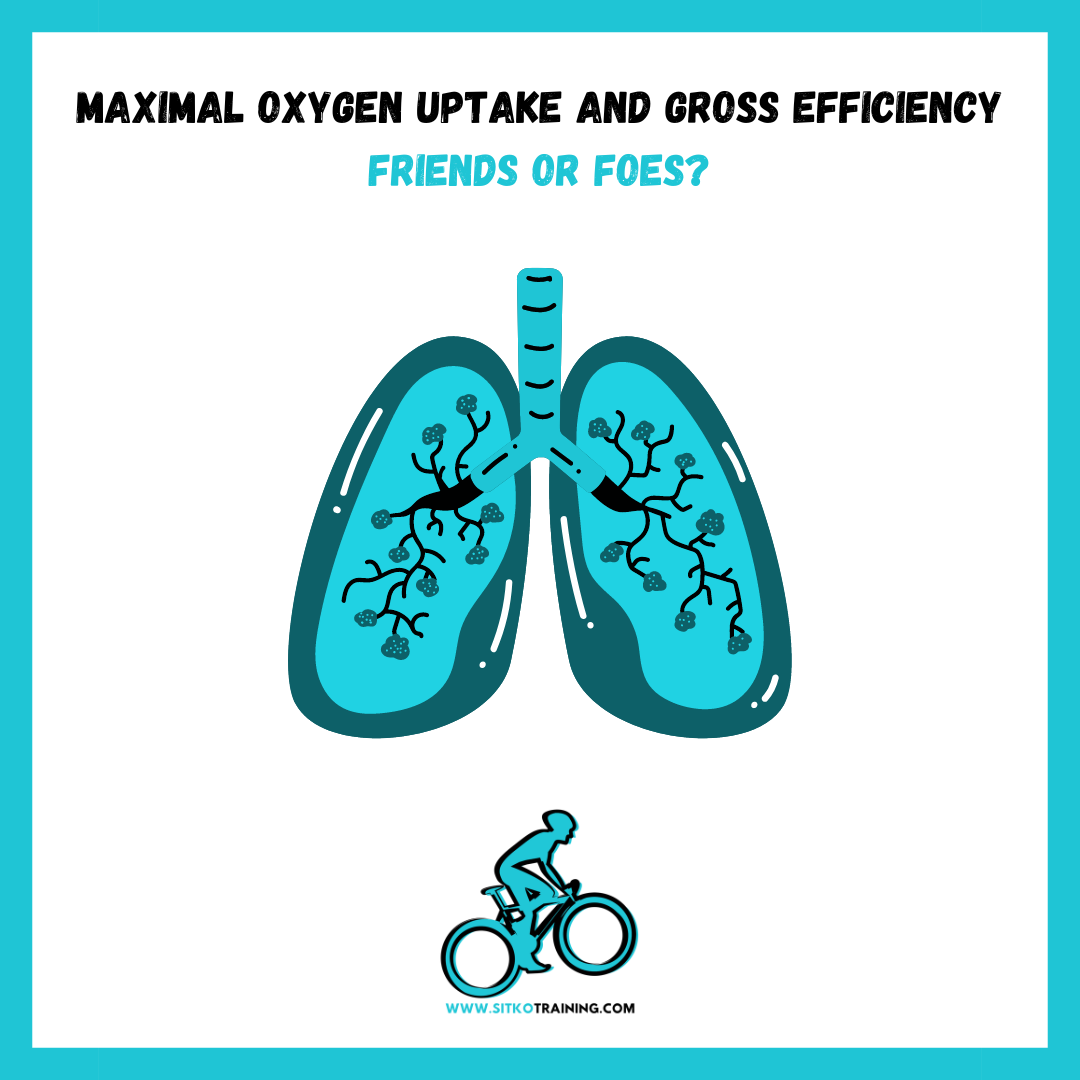
When reviewing the main performance factors affecting endurance sports in general and cycling in particular, maximal oxygen uptake (VO2max) and gross efficiency usually come up very early in the conversations. Curiously, although everyone has heard of these two parameters and knows their importance, very few people are aware of the real role that each one plays, and the inverse relationship between them is certainly not in the public domain.
What role do VO2max and gross efficiency play?
VO2max (amount of oxygen that an organism is capable of processing per unit of time and kg of weight) is one of the best markers of cardiorespiratory capacity. Having a musculature characterized by hyper-efficient fibers is of little use to me if I am not able to get oxygen to reach them in the quantity and speed necessary to carry out the work requested. The VO2max is “somewhat” trainable, and I say somewhat because we are not going to achieve elite levels in a subject with mediocre starting values. I have seen, in exceptional cases, extreme gains (up to 20 ml/kg/min) but associated with cases of great fat mass loss (VO2max is reflected in values relative to weight) and talented/untrained subjects. In normal cases, a gain of 20% of VO2max is already considered a very big milestone at the training level. Taking all this into account, VO2max is a good categorizing marker. It tells us in which category of performance we can perform, but in no case does it predict whether we are going to be successful in that category. In short, a very interesting value for talent detection initiative, as an example.
Gross efficiency, on the other hand, is a more specific marker as long as it is put into context. This parameter reflects the fraction of energy that our body converts into mechanical work. Like VO2max, gross efficiency is somewhat trainable. In short, regardless of the size of our engine, here we are talking about how efficient our engine is. This value, if not linked to VO2max, does not tell us much about performance projection. In other words, it is irrelevant to me that your engine is very efficient if it is not powerful. However, within the same category of subjects (similar VO2max), those with better gross efficiency have more chances of success. In trained cyclists this value usually ranges 18-23%. Yes, indeed, only a fifth of the energy goes to push our pedals, which is a real shame. In summary, together with other submaximal parameters such as functional threshold power, maximum lactate steady state or first inflection point in the lactate curve, it is a good indicator of who is going to be better among similar competitors.
Which parameter is more important?
This would be like having to choose between mom and dad. We need good values in both to be successful, although we can afford to pull a little more towards mediocrity in one if the other is absolutely exceptional, especially in cases of very high VO2max. Let’s say that, roughly (and this deserves a separate article), a proportionally higher raw efficiency will benefit more in longer events, and a proportionally higher VO2max will benefit more in events of shorter duration (but as I warned you, this is a trivialization).
What relationship exists between the two?
The slightly inverse relationship between VO2max and gross efficiency is quite poorly understood. The explanation of this phenomenon is quite cumbersome without resorting to physiology terminology: Increased oxidative phosphorylation is associated with increased production of reactive oxygen species. This phenomenon can be alleviated by a dissociation between the generation of mitochondrial membrane potential and its use for mitochondria-dependent ATP synthesis (a process called mitochondrial uncoupling). However, this requires a higher oxygen consumption. Simplified, I cannot pretend to improve both at the same time, and in fact, for the same state of fitness, normally if one increases the other is likely to decrease.
In summary
1- We can improve VO2max and gross efficiency with training. Normally it will be enough for us to become more competitive in our performance category or, at best, to jump to the next category. Unfortunately, not enough to go from mediocre to phenomenal.
2- VO2max is a good indicator of our category while gross efficiency helps us to place ourselves already within our “performance class”.
3- Depending on the type of objective, we may be more interested in optimizing VO2max or gross efficiency.
4- A parallel optimization of both parameters in the long term is, most likely, impossible given the inverse relationship between them.
Sebastian Sitko
Professor at the Faculty of Health and Sports Sciences, University of Zaragoza. PhD in Sports Sciences, master’s degree in High Performance Sports by the French Olympic Committee, national cycling, triathlon and athletics coach and official coach for the American College of Sports Medicine.